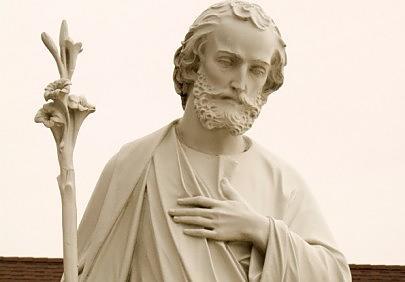March 19, 2014
Today (March 19) the Church celebrates the solemnity of St. Joseph. In the New Testament, St. Joseph appears only briefly (and silently) in connection with the early life of Jesus. Devotion to St. Joseph developed slowly in the Church. Then, amid the many calamities of 14th and 15th century Europe – famine, wars, religious conflicts, and, above all, the Bubonic Plague– popular preachers, like St. Bernardine of Siena, saw St. Joseph as a model familyhead and household administrator. By the 16th century, popular devotion to St. Joseph was flourishing. One of St. Joseph’s most famous 16th-century devotees was St. Teresa of Avila, who said “I know by experience that the glorious St. Joseph assists us generally in all necessities. I never asked him for anything which he did not obtain for me.”
As part of the Counter-Reformation’s strategy for re-evangelizing Christendom, families were encouraged to imitate the Holy Family headed by St. Joseph. After the Kingdom of Italy conquered Rome from the Pope in 1870, Blessed Pope Pius IX proclaimed St. Joseph Patron of the Universal Church. In 1955, Pope Pius XII established a new feast of St. Joseph the Worker (May 1), to counteract the Socialist May Day holiday. In 1961, Blessed Pope John XXIII made St. Joseph patron of Vatican Council II, and the following year inserted his name in the Roman canon. Finally just last year, St. Joseph’s name was added to all the other Eucharistic Prayers. So now, St. Joseph’s special and prominent place in the communion of saints is acknowledged at every Mass. A popular devotion practiced in many parishes – and one particularly appropriate during the Lenten season – is the Blessing of St. Joseph’s Table. In honor of St. Joseph, who provided for the Holy Family, bread, pastries, and other food are blessed and a large portion of it given to the poor.
